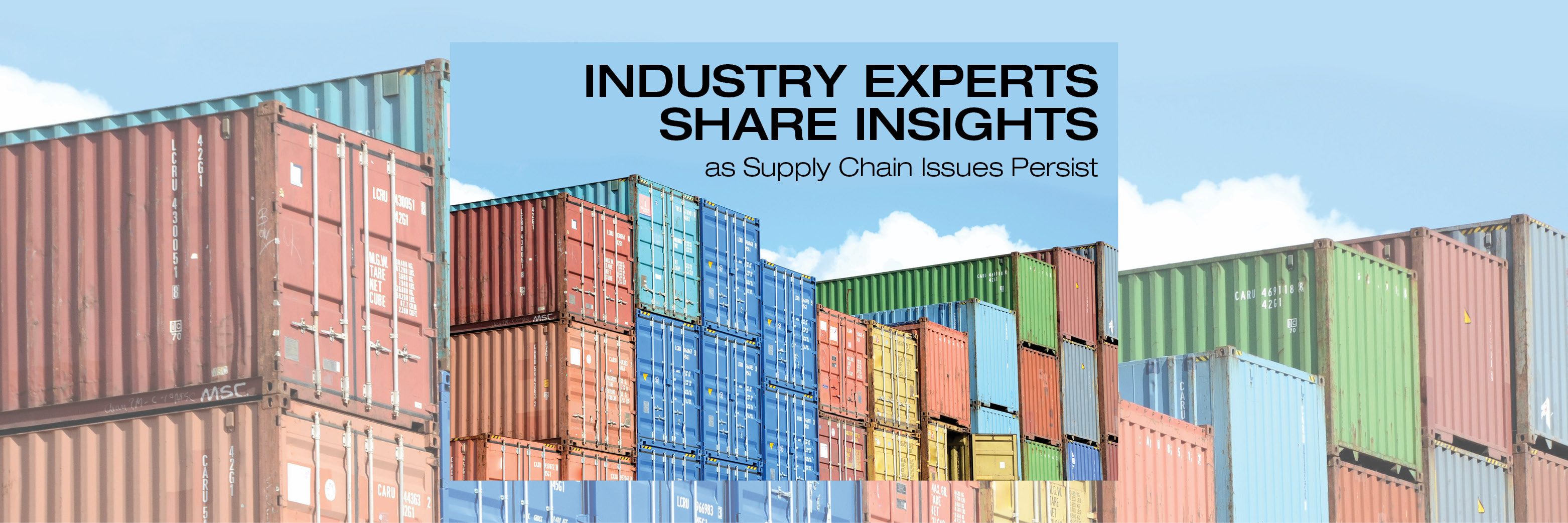

Disruptions in the supply chain are continuing to create challenges for equipment providers spanning nearly every industry. Many of our customers are facing some of the most difficult business obstacles they have experienced in recent history, from soaring prices to a shortage of goods. Unfortunately, there’s no way to predict when things will improve, in fact, some of our partners estimate it could be a year or more before things return to normal. Providers are feeling pressure to perform at pre-pandemic levels, but without inventory being consistently available, it becomes all the more difficult to hit quarterly numbers and profitability goals.
So how are providers addressing these challenges? What’s working in the short term and what can be done to enhance longer term outcomes? And what can be done to ensure a strong resurgence once the supply chain stabilizes? We asked experts within the office imaging and technology sectors for their insights as it relates to their respective industry. Here’s what they had to say.
Bob Goldberg – General Counsel, BTA (Office Equipment Industry)
“Organizations have prioritized the needs of their dealer channel. Critical orders are being filled. Organizations have air shipped products and supplies and permission to use compatible supplies has been issued without being a breach of program agreements. Supply chain challenges have brought all aspects of the industry closer together and the channel is working for the mutual benefit of all.
In the short term, reliance on used equipment has increased. The focus is on the result being sought rather than the equipment delivering the result. The channel is looking for solutions and is being creative to fulfil end-user needs. Additionally, clear and consistent communication with end-users is the key. Dealers should increase their outreach. Closer contact with end-users demonstrates the value of a trusted advisor.”
John Hey – Partner, Strategic Business Associates (Office Equipment Industry)
“The companies that are surviving, and in some cases thriving, are the companies that were financially strong at the beginning of the pandemic. They maximized the government programs like the Payment Protection Plan and focused on employee retention. That financial strength gave them the capability to make strategic decisions versus reactive decisions around inventory and the relationships with their manufacturers. In the short term, most dealers will be able to survive. Many dealers have successfully countered supply chain impacts by installing used equipment as place holders until new equipment is available, selling in-demand used gear, and utilizing lease extensions.
In the long-term, financial strength and critical mass (size) will play key roles as competition and the speed of technology increases. It’s especially important during this window of time to stay close to your clients, stay flexible, take care of your high-capacity people, and maintain strong financial management so you are well positioned to shift focus to achieving profitable growth on the other side of this.”
Tyler Snyder – Chief Information Officer, Innovative Incorporated (Technology Industry)
“There are two great things you can be doing to address supply chain challenges: first, it’s important to have a reporting tool that integrates with major tools. Without an integration, it can make it challenging in tumultuous times like they are today. Plus, building quotes can help by having them already directly set up with distributors. Secondly, be more proactive in conversations with customers. Look ahead for what they will need, not what they need now. If you’re looking at six months out, execute in advance so you have plenty of time. Even if you’re looking three-to-four months out, plan ahead. When you continue to think longer term with customers, it allows for more strategic conversations. We work really hard to minimize surprises for our customers. The more planning you can do is always better for the end user.
We have started to stockpile some of our loaner hardware. So for example, when a lease comes to an end and we have the hardware on hand, we’ll make sure it’s in good working order. If we’re unable to have their hardware available in time, we’ll use it to help our customers in the short term until the equipment is ready later. We’re also stocking some common types of hardware. Laptops are the biggest ones and if we have common specs, we might grab some for quick turnaround units, and that has been helpful to counter the impacts of supply chain obstacles.
Technology customers who want to come out strong when supply chain issues subside should remember it won’t last forever and they should continue to plan ahead with customers; really flex that planning muscle. We are planning strategically for their spending this year and next year to end up with a satisfied customer and that’s the goal.”
Brandon Hartke – President, Xfer (Technology Industry)
“One of the things that we’re doing to address supply chain challenges is carry more inventory for the things we offer more. Having more of a buffer to deliver services to our customer rather than what we used to do just in time for the projects we have.
We have had to evaluate the vendors we’re working with because if we can’t get product, that may not be a viable vendor. Supply chain has become a factor when evaluating partners and companies we work with.
The key for our customers is that we’re planning so our customers come out strong when the supply chain issues subside. We’re planning with them and creating roadmaps to show where they’re going and anticipating their needs to order products for them before it’s critical. Customers should be thinking about and anticipating what their future technology needs are. Our goal is to get ahead of it and talk about what computers they’ll need ahead of time and plan for it, so we are able to wait six months for the product to come in and not in a down situation.”
Justin McClung, Director of Operational Support Services, Nex-Tech (Technology Industry)
“Certain product lines (such as PCs) are at a standstill. To address supply chain challenges, we’re focusing on product lines we can get product from now. We’re also increasing the longevity of the computers customers have verses a complete swap out of replacements like we normally would. At the end of the day, the big thing is we’re able to focus sales and technical efforts around products we can get.
The phone systems in the cloud are the ones that seem to not have quite the restraint of getting equipment like everything else is.
Customers looking to come out strong when supply chain issues subside should make their technology stretch longer and hope once the backlog subsides, maybe better product will be available at a better rate. The one thing that we’re very fortunate of is customers understand the situation that the world is in right now. Whereas normally we’d sell them a product, we'd sell them a service and they’d have it installed within 30-to-60 days. Now you're talking one or even six months or longer. And they've provided a lot of grace and understanding.”
At GreatAmerica, our mission is to help our customers achieve greater success, and right now, that means collaborating on ways we can help our customers minimize the impact felt on margins and cash flow in this window. Our flexibility allows us to develop creative solutions that help secure opportunities in our customers’ funnels, even as supply chain challenges persist. Though there is no one-size-fits-all solution, we are ready and willing to dig into your unique circumstance and identify ways we may be able to help. For more information, get in touch with your GreatAmerica Sales Representative.
GreatAmerica
GreatAmerica Financial Services® is the largest family-owned national commercial equipment finance company in the United States. With $3.5+ billion in assets and life-to-date finance originations of $16.1 billion, GreatAmerica is dedicated to helping manufacturers, distributors, resellers, and franchisees be more successful and keep their customers for a lifetime. GreatAmerica offers innovative, complementary services in addition to financing. Established in Cedar Rapids, Iowa in 1992, GreatAmerica also maintains offices in Des Moines, IA, Marshall, MN, Milton, GA, and Northbrook, IL. The company is deeply rooted in the communities where it has offices, contributing more than $1.1 million annually through its Donor Advised and Employee Advised Funds—empowering team members to guide charitable giving and make a meaningful difference where they live and work.




